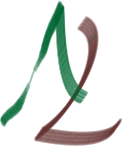Latest
E-mail chain
From: Fred Kelso
Sent: Sunday, October 30, 2005 8:00 p.m.
To:
Subject: Fila Bite the People Markings
Hi George:
I just ran across an interesting article that may have relevance to the
"Fila bite the people" markings in Chester County.
"Various symbols have been engraved on to wooden beams and sometimes drawn
into plaster work on ceilings. The most common of these is the
'daisywheel'.49 It is a compass-drawn circle with petals within it and it
appears on buildings and on furniture within buildings throughout Britain.
It appears to have been a general protection against ill-fortune or was
deemed a good luck symbol."
[This sounds similar to the pictures on your website. A more detailed
reference is given, but it may take a bit of digging to get a copy...]
"49. For more information from the pioneer of this subject see, Easton
Timothy, 'Ritual Marks on Historic Timber', Weald and Downland Open Air
Museum Magazine, Spring 1999, pp22-30."
See http://www.whitedragon.org.uk/articles/folk.htm for the parent article
on the [British] archaeology of folk magic.
Fred Kelso
From: Fred Kelso
Sent: Monday, October 31, 2005 12:27 p.m.
To:
Subject: Response from England on Ritual Markings
Hi George:
I got the following response from Brian Hoggard -
"Dear Fred,
Many thanks for your e-mail and link to those images. I have never seen
anything like those images before - I think they're from a culture
separate to those I have studied so far. In as much as I can say
anything I get the feeling that the markings are invoking an entity to
act as a kind of guard to the passage, to protect it from unwanted
intrusion. My interpretation is based solely on the appearance of a head
or face in one of the images (although a larger image would make me feel
more sure that is what it is) and the word 'bite' which appears. I am
unsure whether I am contributing anything here or just demonstrating my
ignorance of the people who made these marks!
I shall keep the images in my files and look out for more examples in
future.
Best wishes,
Brian Hoggard."
So perhaps the artist was requesting "Fila" , which may be the dog or
some as yet un-recognized helpful spirit, to attack anyone who might
threaten those hiding in the passageway?
Fred
From: Fred Kelso
Sent: Tuesday, November 1, 2005 1:30 p.m.
To:
Subject: An Early Morning Thought
Hi George:
While I was driving the kids to school this morning a thought struck me.
The words "the people" in the admonition have always seemed awkward to
me, and rather vague. What if...the markings were made during a very
specific, terrifying moment, when a slave was hiding in the passageway,
and could hear the voices of slave catchers and the barking of a dog,
perhaps right on the other side of that wall? Perhaps the slave knew
that local slave catchers used Filas and recognized the bark. The
markings could have been a hasty attempt to conjure up spirits to force
the barking dog against its unseen owners - "the people" and thereby
distract them from their task at hand and get them out of the house...
Fred
From: George F. Nagle [ ]
Sent: Monday, October 31, 2005 7:49 PM
To: Brian Hoggard
Subject: FW: Response from England on Ritual Markings
Dear Mr. Hoggard,
Fred Kelso recently contacted you in regard to the markings found in Chester
County, Pennsylvania, USA, which are suspected of having been produced by
fugitive slaves in the late 18th or early 19th century. You were very gracious
to respond so quickly and to offer your expert opinion, thus providing new
possibilities to be considered in trying to understand the meaning behind these
mysterious markings.
Because your remarks on the topic of folk magic are, I believe, highly relevant
to the story, I would like to reprint your email correspondence with Fred Kelso,
as forwarded below, on a new page linked in sequence from the pages containing
the images: a "for more information, see this page" link. I would also include
links to the following two pages that are connected to you:
"Ritual Marks in Historic Buildings" at the url
http://www.apotropaios.co.uk/ritual_marks.htm and "The Archaeology of
Folk Magic" at the url
http://www.whitedragon.org.uk/articles/folk.htm.
We know that European folk magic does enter into African American history in
several instances in Pennsylvania. The Pennsylvania Germans--those descended
primarily from emigrants from the Palatinate--even today practice a form of folk
magic known as Pow-Wow. Although Pow-wow was much more common in the past, it is
still practiced in some remote locations in Pennsylvania and elsewhere. We have
reported on the use of disinterred jaw bones of long buried African slaves in
Pow-wow ceremonies. (see
http://www.afrolumens.com/slavery/wenrich.html for the reference).
Thank you for your consideration of this matter. The Afrolumens Project website
is a private educational site devoted to Pennsylvania African American history
and is not a commercial site.
Respectfully,
George F. Nagle
Afrolumens Project Editor
From: Brian Hoggard
Sent: Tuesday November 1, 2005 3:52 PM
To: George Nagle
Subject: RE: FW: Response from England on Ritual Markings
Dear George,
Please feel free to quote me on your site. I'll reply properly to your mails in
the next day or so... very busy right now!
Best wishes,
Brian.
Check back for more in this line of discussion, coming soon.
|
